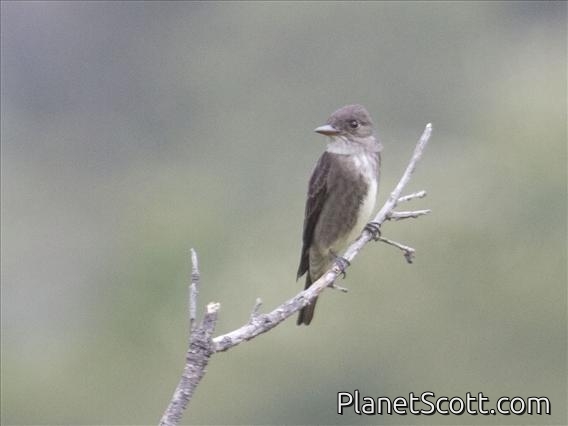Olive-sided Flycatcher (Contopus cooperi)

Olive-sided Flycatcher (Contopus borealis)
×


Olive-sided Flycatcher (Contopus borealis)
About Olive-sided Flycatcher (Contopus cooperi)
- Kingdom: Animals
- Phylum: Chordates
- Class: Birds
- Order: Perching Birds
- Family: Tyrant Flycatchers
The olive-sided flycatcher is a small to medium sized passerine bird in the family Tyrannidae, the tyrant flycatcher family. It is a migratory species that travels from South America to North America to breed during the summer. It is an agile flyer and mainly consumes flying insects caught in flight. Since 2016, this species has been assessed as being near-threatened globally (IUCN) and threatened in Canada (SRA) due to its declining populations.
Source: Wikipedia
Visits
-
2007-04-30
Mount Davidson, United States of America -
2007-10-18
Ruiz Cortines, MexicoCould have been another species of flycatcher. Gray vest was not obvious. -
2008-06-13
Mount Davidson, United States of America -
2011-05-28
Del Valle County Park, United States of America -
-
-
2013-09-28
Presidio - El Polin Spring, United States of America -
-
-
-
-
-
-



